Maundy Thursday | Part I
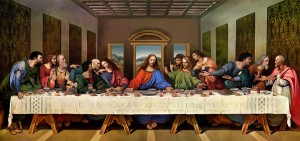 It’s Thursday, the 14th of Nisan. Tomorrow begins the Feast of Unleavened Bread – the high water mark of the Jewish spiritual calendar. At 3:00 today the Passover Lamb will be slaughtered and the Passover meal will be served. While it’s a ceremony in and of itself, over the years the Jews have merged the two events into one and it’s very typical to refer to this whole timeframe as “Passover Week.”1 And what a week it is! But this year, when Jesus leads His disciples through the Passover liturgy, He’s going to explain the true meaning and purpose of this ritual that’s been performed for centuries.
It’s Thursday, the 14th of Nisan. Tomorrow begins the Feast of Unleavened Bread – the high water mark of the Jewish spiritual calendar. At 3:00 today the Passover Lamb will be slaughtered and the Passover meal will be served. While it’s a ceremony in and of itself, over the years the Jews have merged the two events into one and it’s very typical to refer to this whole timeframe as “Passover Week.”1 And what a week it is! But this year, when Jesus leads His disciples through the Passover liturgy, He’s going to explain the true meaning and purpose of this ritual that’s been performed for centuries.
The term “Maundy Thursday” is used to describe this day where Jesus had His “Last Supper” with His disciples. The word “Maundy” (pronounced “MAHN-dee”) is loosely based on the Latin word for “commandment” (man datum) – a word that Jesus used in John 16:33 when He said, “A new commandment I give you: Love one another. As I have loved you, so you must love one another.”
It’s hard to overstate the significance of this time of year in the mind of your typical Hebrew. Long ago, on the night the Jewish nation left the land of Egypt and tasted the sweetness of freedom for the first time in 430 years, God established this festival that would mark the beginning of the new year. It would be on this night that the Jews would remember the awesome Power that God deployed on their behalf in order to set them free from the oppressive rule of their Egyptian taskmasters. From now on, the Jewish spiritual calendar would be centered around this night and for Christians this night would represent the initial phases of a Divine Plan that would defeat the power of sin once and for all.
This is Maundy Thursday.
It’s Time to Move
In Exodus 12, you have God telling Moses and Aaron how to prepare for what would be an event that the Jewish community would celebrate from that point on. Several plagues had ravaged Egypt, but the one that would be experienced this particular night would make all of the others pale in comparison. The firstborn of every household would die and before the night was over, there wouldn’t be a single home without a corpse somewhere inside, including the palace of Pharaoh.
The only exception to that rule was the home whose door frames had been distinguished with the blood of a year old male lamb that was devoid of any kind of blemish or imperfection. It would be that blood that would cause the Lord to “pass over” that particular home and the firstborn would be spared. Every other house that had not been so identified would experience the wrath of God.
Can you feel the crescendo? Not only is Israel on the threshold of being able to walk away from their bondage, but a wonderfully terrible manifestation of God’s Power was getting ready to happen that would
- reveal the gods of Egypt as being utterly false
- it would convince Pharaoh to let God’s people go
- and it would put in place a template that God would use to frame the institution of grace through the death and resurrection of His Son centuries later
This is a major milestone! So much so that God saw fit to establish a ceremony that was to be performed even before they christened their doorposts with the blood of the blood of the Passover lamb. And this same ceremony would be observed as a holiday that is celebrated to this day.
It says in Exodus 12:1:
The Lord said to Moses and Aaron in Egypt,2“This month is to be for you the first month, the first month of your year. (Ex 12:1)
And the first week of the first month would be marked by a seven day festival called the “Feast of Unleavened Bread” – a collection of meals, offerings and sacred assemblies as described in Numbers 28:17-25.
An Important Prelude
The Passover Meal was the event that signaled the beginning of the Feast and it involved a specific sequence and a distinct menu which you can see in Exodus 12:8-11:
- You had the meat of the lamb that had been slaughtered in order access the blood that would be needed to stain the doorframe.
- You also had a collection of bitter herbs the were indigenous to Egypt that would remind future generations of their “bitter” lives as slaves under Pharaoh.
- And you were to eat it as though you were in a hurry, in order to remember how Israel had to leave quickly the night of the Exodus. Hence, you were to eat bread devoid of any yeast.
The night of the first Passover was characterized by a lot of activity. The Passover Meal was to be done “in haste” (Ex 12:11). Following the meal, the priority was to ensure the blood of the lamb was appropriately applied to every household’s door because come midnight, the Lord would unleash the tenth plague resulting in the death of every first born in Egypt. After that, they would need to be ready to leave because, according to Exodus 12:29-31, it was still dark when Pharaoh summoned Moses and Aaron and insisted that they leave immediately, so there wasn’t much time.
Once the Hebrews were settled, however, the Passover Meal was reconfigured somewhat. In Deuteronomy 16, it was established that the Passover lamb would be sacrificed at a location the Lord would determine. So while you ate the Passover meal with your family as you had before, you weren’t necessarily going to be eating it in your kitchen. Rather, you would be eating it wherever the tabernacle or Temple was located (see Dt 16:5-6).2
A Lot of Activity
By the time Jesus was preparing to eat His last Passover Meal, Jerusalem had become the central place of worship, thus the streets were clogged with pilgrims from all over the Roman empire eagerly anticipating Passover Week.
Hayyim Schauss, in his book “The Jewish Festivals: A Guide to Their History and Observance,” describes the scene in Jerusalem that Jesus and His disciples were no doubt observing as they were preparing for the “Last Supper.”
Midday … The spirit of the holiday has permeated every nook and cranny of Jerusalem. By now all have ceased working; even the tailors, the shoemakers, the haircutters, and washers have finished the last piece of work for the pilgrims. Thousands of Jews march through the town, this one with a sheep, that one with a goat, riding high on his shoulder. All direct their steps to the Temple, to be among the first to offer their Pesach sacrifice. The regular afternoon sacrifice at the Temple is offered an hour earlier than usual and at about three o’clock the people begin the slaughtering of the Pesach sacrifice. The ritual is repeated three times. When the court of the Temple is filled with the first comers, the gates are shut. The Levites blow the ceremonial t’kioh, t’ruoh, t’kioh (a threefold blast) on their trumpets and the sacrifice begins. The owner himself slays the animal. The priests stand in rows, bearing aloft gold and silver trays, each metal borne by a different row of priests. They perform their share of the ritual and the Levites stand on a platform and sing Hallel, Psalms of praise for holidays, to the accompaniment of musical instruments. The elaborateness of the ritual and the singing and playing of the Levites add dignity and beauty to the scene, and the Jews gathered in the court are filled with devotion and piety. The first section files out of the court and the second section files in. The same ritual is performed again. It is repeated once more for the third and final section. Members of the third section are called “Lazybones.” The entire ceremony and ritual is carried on in a comparatively quiet and orderly manner. Once, in the time of the famous Hillel, there was such a surge and crowding at the sacrifice of the Pesach that an old man was crushed to death, but that never happened again. So orderly is the crowd that all three sections have finished in less than two hours, and the priests are left alone to clean up the court.3
The streets are choked with not only the locals, but people from all over the civilized world. When you can close your eyes and envision the sea of humanity that is converging on Jerusalem during this time, it gives you an even more vivid picture of the size and diversity of the crowds that would be gathered to demand the death of Christ, which would happen in less than 24 hours.
Was it Really Thursday?
There’s been some speculation that since the gospels don’t seem to agree on the actual night that Jesus performed this ceremony, these constitute portions of Scripture that are either flawed or have become corrupted over the years.
You have to be very careful before labeling a portion of the Bible as being in error because in so doing you inevitably create a dynamic where the whole of Scripture can be called into question. Should the Truth of God’s Word be determined solely on the basis of how well it resonates with one’s sense of logic, you no longer have an Authoritative text. Rather, you have a resource that can be either be embraced in part or dismissed altogether based on “what makes sense.” In either case, you’ve positioned the human intellect above the One Who fashioned man’s capacity to reason to begin with. Not only is that not logical, it’s positively lethal in the way it strips God’s Word of its Power and Relevance (Matt 5:18; 1 Cor 15:16-19; 2 Tim 3:16-17; 2 Pet 1:20-21).
The confusion stems from John 19:14 where it says:
Now it was the day of preparation for the Passover; it was about the sixth hour. And he *said to the Jews, “Behold, your King!” (Jn 19:14 [NASB][emphasis added])
According to Matthew, this conversation is happening on the Sabbath which puts Jesus’ crucifixion on Friday. Since the Last Supper happened the night before, it’s obvious the Passover Meal was celebrated Thursday night. Mark 15:42 references the time Jesus was buried as being “Preparation Day (that is, the day before the Sabbath)” which corroborates with Matthew. Then in Luke 22:7, it says:
So, again, if Passover and the Feast of Unleavened Bread are being referred to simultaneously with the term “Passover Week” or “Feast of Unleavened Bread,” then Luke’s reference to the “day of Unleavened Bread on which the Passover lamb had to be sacrificed” is obviously referring to the 14th of Nisan, which, that year, fell on a Thursday when you consider Matthew and Mark’s account. The NIV Text note on verse seven reinforces that:
Going back to John’s statement in John 19:14 – given the customary way in which the Passover and the Feast of Unleavened Bread were simultaneously referred to in the context of one term, it is now easily reconciled with his synoptic counterparts. In this instance, John uses the word “Passover” to refer to “Passover Week.” You see that in the way the New Century Version of Scripture renders the verse:
Now, it’s much more obvious that John’s use of the term “preparation day” is referring to the day before the Sabbath which, that year fell on the 15th of Nisan. Consequently, “preparation day” was not just the day prior to the Sabbath, it was also the first day of Passover Week.
In addition, John uses the Greek word “paraskeue” to define the day, which by that point was a technical term that referred to the “day of preparation” for the Sabbath. Remember, the Sabbath for the Jew is Saturday and not Sunday. Sunday would later be embraced as the “Lord’s Day” in that it was the day Jesus rose from the grave. So, given everything we’ve now considered, John’s account is consistent with all of the other gospel writers. Jesus was crucified on a Friday and the Last Supper happened on the evening before which was Thursday.
The Passover Lamb
When you really pop the hood on Scripture, you inevitably discover the kind of symbolism that ties the whole of God’s Word together in a way that’s nothing short of inspiring. For example, in the book of Ezekiel you read of how God gave him a vision of the glory of God departing from the temple. The southern kingdom of Judah had looked on while the Assyrians had conquered the northern kingdom of Israel. But while it could be accurately said that the reason for Israel’s demise was because of their refusal to obey and honor God, Judah was right behind them.
Ezekiel’s vision shows the glory of God departing from the Temple in Judah in chapters 8-11. In chapter 11, verse 23 it says, “The glory of the Lord went up from within the city and stopped above the mountain east of it.” The mountain being referred to here is the Mount of Olives. When Jesus made His triumphant entry into Jerusalem in Luke 19:29, He made His way into the city from the Mount of Olives. When He ascended into Heaven in Acts 1, He did so from the Mount of Olives (verse 12) and when He returns, according to Zechariah 14:3-4, He will take His stand against those who opposed Jerusalem from atop the Mount of Olives.
Jesus didn’t do anything randomly. His whole life was punctuated with actions and characteristics that were fulfillments of prophecies articulated centuries beforehand:
- where He was born (Micah 5:2)
- His escape from Herod’s plot to kill all of Israel’s newborns (Jer 31:15; Hos 11:1 [Matt 2:15])
- the way His ministry was prefaced by a messenger (John the Baptist [Is 40:3; Matt 3:1-2])
- the passion He exhibited when He cleared the Temple (Ps 69:9; Jn 2:15-17)
- the healings that He did (Is 35:5; Matt 9:35)
- the manner in which He entered Jerusalem on a donkey (Zec 9:9; Lk 19:35-37)
While Scripture doesn’t specifically reference Jesus’ approach to Jerusalem as a mirror image of the route the glory of God used to exit the Temple centuries before, it’s still an intriguing act on the part of Christ as far as the way in which it brings yet another Old Testament event under a cohesive Messianic heading.
You see that also in the way Paul references Christ as the ultimate Passover Lamb:
Get rid of the old yeast that you may be a new batch without yeast – as you really are. For Christ, our Passover lamb, has been sacrificed. (1 Cor 5:7)
It’s not that Jesus’ death occurred on Thursday afternoon when the lamb for the Passover Meal was being slaughtered as much as it’s a cue to step back and realize that God’s Purpose in establishing the Passover ceremony was not to simply remember how He had delivered Israel from the power of Pharaoh as much as it was to recall and embrace how the death and resurrection of Christ has destroyed the power of sin.
The NIV Text Note on that verse says “In his death on the cross, Christ fulfilled the true meaning of the Jewish sacrifice of the Passover lamb (Is 53:7; Jn 1:29).”6
That’s the Passover meal we participate in every time we take communion. It’s not just a piece of bread and small cup of grape juice, nor is it a mere piece of unleavened bread and a portion of mutton. It’s what’s represented by those things – the Solution to the lethal power of sin – the sacrifice of God’s Son. That’s what Jesus was explaining to His disciples at the Last Supper, the meal God had in mind when He first gave the Passover instructions to Moses.
Regardless of what day it may have been for the Hebrews when they celebrated the Passover meal the first time, for us as believers, it’s always the Thursday of Passion week that we recognize as the day Jesus collected His disciples in the upper room and spoke the words that we repeat every time we take communion: “Do this in remembrance of me…” (1 Cor 11:24).
That’s Maundy Thursday.
Click here to read Part II!
1. “The week of masso-t, coming right on the heels of Passover itself (during which masso-t were actually eaten, along with the lamb, bitter herbs, etc.) very naturally came to be know as Passover Week (cf. Encylopedia Britannica, 14thed., 12:1041), extending from the fifteenth to the twenty-first of Abib, inclusively. (Arndt and Gingrich [Greek-English Lexicon, pp 638-39] state: ‘This [i.e. Passover] was followed immedialy by the Feast of Unleavend Bread…on the 15th to the 21st. Popular usage merged the two festivals and treated them as a unity, as they were for practical purposes.’)” (Encyclopedia of Bible Difficulties, Gleason L. Archer, Zondervan Corporation, 1982, Grand Rapids, MI, p376)
2. Several regulations were given concerning the observance of Passover. Passover was to be observed “in the place which the Lord your God will choose.” This implied the sanctuary of the tabernacle or the Temple in Jerusalem. (“Nelson’s Illustrated Bible Dictionary”, Thomas Nelson Publishers, Nashville, TN 1986, p380
3. “The Jewish Festivals: A Guide to Their History and Observance”, Knopf Doubleday Publishing Group. Kindle Edition. Schauss, Hayyim (2012-04-04), p53
4. “NIV Study Bible”, Zondervan Publishing House, Grand Rapids, MI, 1985, p1582
5. Ibid
6. Ibid p1740
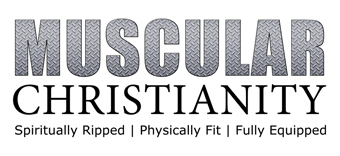
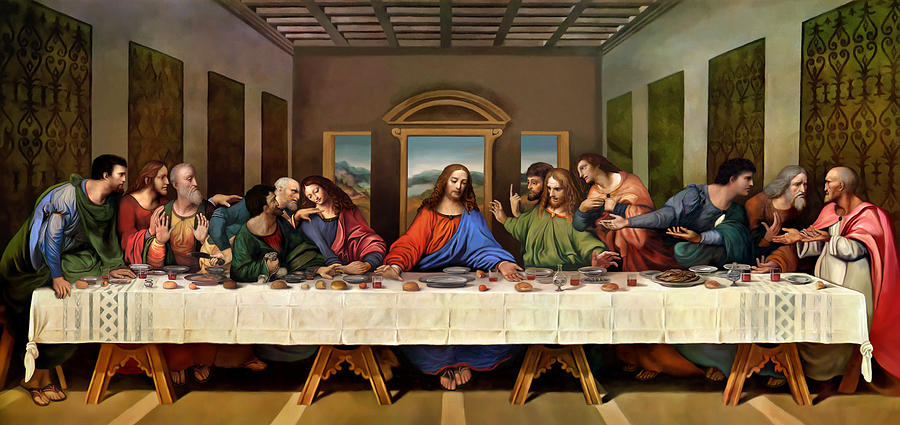
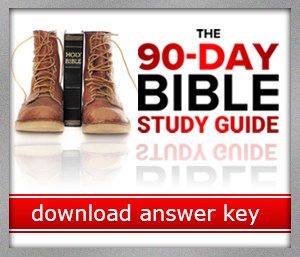
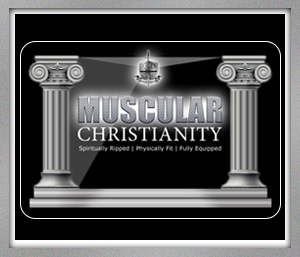


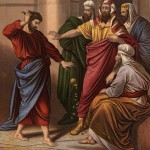

Leave a Reply
Want to join the discussion?Feel free to contribute!